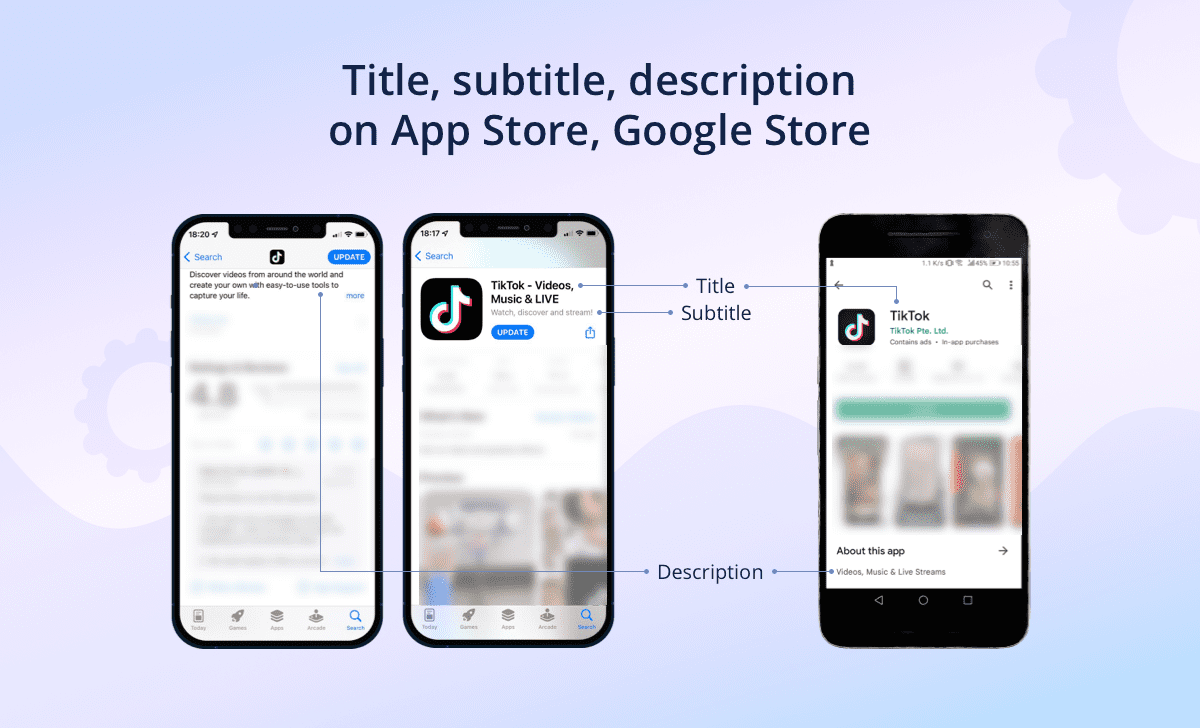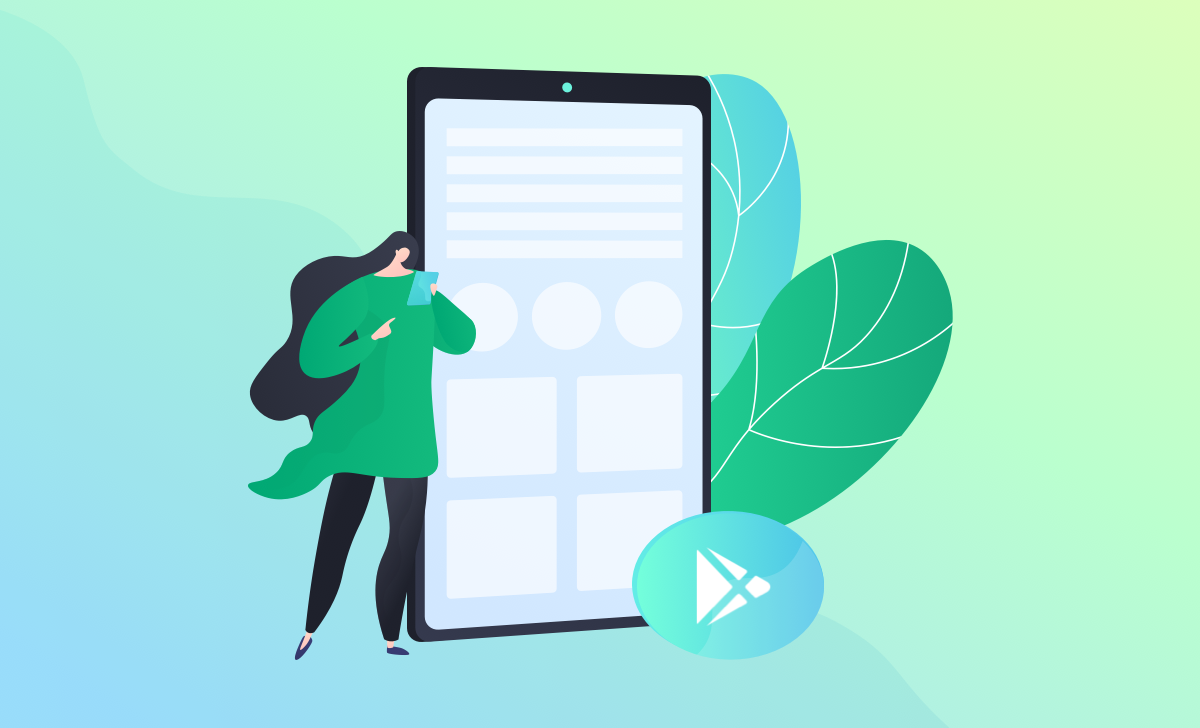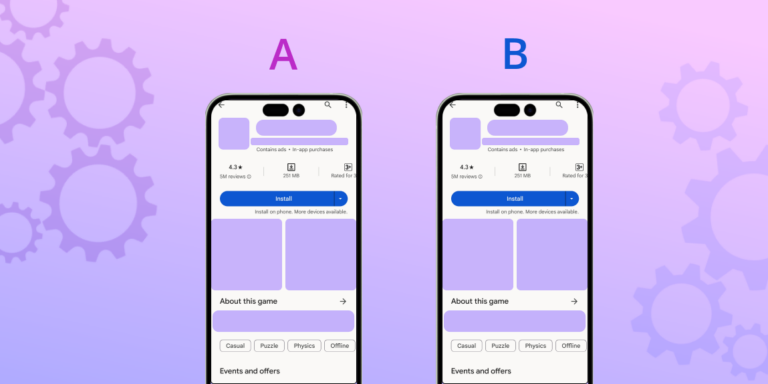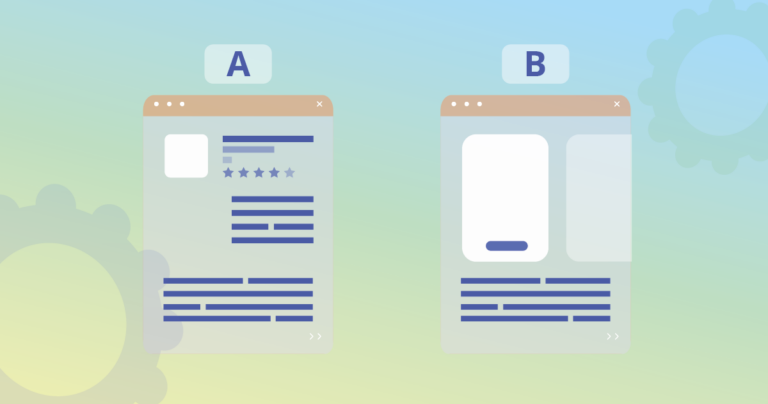You have designed and developed an excellent application that works flawlessly, boasts tons of unique features, and brings massive value to its customers. Now, there remains just one tiny problem – you have to make the product visible and desirable to app store users. For that, you will need to think of a perfect app title that will help people identify your solution as the right one and propel conversion. In this article, we will focus on the program text elements. In addition, we recommend that you familiarize yourself with all the steps of the ASO Checklist: What to Do to Increase Your App Visibility.
So, what kind of title will be able to capture the interest of users on the fly and prevent your creation from being lost among millions of other applications that are currently collecting dust on the virtual shelves of the Google Play and Apple App Store? What to do to make your app title more appealing than the 2.22M of iOS apps and over 3.4M of Android products? It’s easy – use ASO!
App Store Optimization, aka ASO, is a set of measures targeted at improving your app rating across the major app stores through optimizing various text and visual elements. If you do not yet know how to use ASO, the Asolytics team has prepared an easy-to-follow-through guide to teach you how to create an app title and subtitles that will be a superb fit for your specific product. Read on to become an expert swimmer in the turbulent app marketing waters!
Table of Contents
Text Element Optimization Defined: App Title and Subtitle/Short Description
In this post, our Asolytics specialists will be focusing on text elements like app title and subtitle. As part of the app store optimization, title is the most important element, since it is the first thing that users interact with when searching for an app in an online store, it plays a pivotal role in creating the right first impression and connecting your product with the right target audience. Why not begin by setting some basic ASO terminology straight?
Text element optimization is the process of enhancing – visually and semantically – text-based app elements (app title, app subtitle, and short description) to make your product more visible and appealing to app store users and more likely to be downloaded.

How far you can take your optimization depends on the store that offers your app. This article will provide app-text optimization tips for Google Play and Apple App Store. Promotional App Store subtitle examples, as well as more specific details for App Store or Google Play, can be found by following the links and reading the guides from our ASO Academy.
Apple App store
- App Title: in the Apple App store, an app title is the name of your application and the most high-attention area for keywords. It is the top line on the app page, located on the right from the app icon and typed in bold.
- App Subtitle: this text element, only found in the Apple App store, is placed directly under the title, on the right from the app icon. It is the right destination for second top-priority keywords.
Google Play
- App Title: same as in the Apple App Store, Google Play app title is your app’s name – the first line on the product page, bolded and located to the right of the icon. Providing room for up to 50 characters, your app title should incorporate several most essential keywords in addition to the brand name.
- App Short Description: instead of app subtitle, Google Play offers app short descriptions comprising up to 80 characters. This element is your chance to briefly introduce your product’s best features to the user and discreetly include a few additional powerful keywords.
The process of app title subtitle optimization should usually feature the following four main steps:
- Get familiar with your target audience.
- Perform detailed keyword research and analysis.
- Produce a well-phrased, meaningful, gripping app title and subtitle/short description.
- Test the results and introduce further optimization efforts if needed.
We will dwell on the final two steps further down this post. For now, let us see why the first two ASO text optimization stages are essential.
Get familiar with your target user audience
By carefully researching your target market and audience, you collect precious insights into their unique behaviors and expectations. Such data will come in handy when prepping your app’s text info. The questions you will need to be focusing on are:
- Who are your target users/what is their age?
- Where do they come from/what language do they speak?
- How do they learn about new apps on Apple App and Google Play stores?
- Why do they need an app like yours?
With such research, you will add value to your later marketing efforts and get a chance to see your creation at the top of app store rankings.
Perform detailed keyword research and analysis
Keywords are the words that users type into search bars to discover your app within the store, and, as such, they are a valuable marketing asset. Knowing which words are the trendiest and most likely to capture the user’s attention on the fly will help you craft an app-relevant keyword set that you can implement to advance your app store optimization activities.
When looking into keywords, mind the following factors:
- Applicability: the words you use need to be relevant in the context you intend them for. Choosing the wrong or misleading keywords to describe your app will frustrate your users and possibly discourage them from trying your product at all.
- Difficulty: known as competition metric, this value shows how easy or difficult it is for the user to discover your app within the store using a specific keyword. It also indicates how likely it is for your app to rank high among search results with any particular keyword.
- Volume: keyword search volume is a metric that shows you how loaded a specific keyword is, in other words, how much traffic it is likely to invite to your app if used to describe it.
While there are always keywords suggested by the app store itself, relying on them alone will make it harder to ensure the long-term visibility of your product. It is best to research and handpick the core keyword set yourself via specialized ASO tools like AppTweak, App Annie, Mobile Action, etc.
How to Create a Great App Title that Will Facilitate Installs?
Now that you know more about the central text app elements and understand how to choose the right keywords that will resonate with your target audience, you are ready for the next step. Let us now dive into how to write a title and subtitle impactful enough to instantly spark the user’s interest and drive downloads to your application.
Before actually creating an app title, it pays to know what characteristics all top-notch app titles have in common. So, here are some of the parameters you will have to meet with your app name:
- Relevancy: to avoid confusing customers about what your app does, make sure its name is relevant and in line with the contents. It is best if the title uncovers your app’s purpose or features to some extent.
- Length: as far as the length goes, short is good. Shorter app titles are stickier and more attractive. Shorter names also mean more space for vital keywords.
- Memorability: this parameter is related closely to relevancy – the more the title corresponds to the contents, the more memorable it is. Tinder, letgo, Grammarly are all great examples of the most popular apps with names that stick.
- Uniqueness: riding on the coattails of other apps with strong brand awareness will not help you promote your creation much, so avoid giving your app a name similar to big-shot, same-niche products. Making your app sound reasonably unique is the best way to go here.
With all the above nested solidly in your minds, it is time to start working on the app title itself. Here are a few store-specific tips to assist you in your endeavors:
Apple App Store: App Title Tips
Pick the title for your app that is original and comprehensible. It should communicate the mission of your app to potential consumers lucidly and convincingly. Keep your Apple App Store title to 30 characters max – the idea is to squeeze in your brand name or a key selling point and leave enough room for a few high-priority keywords to boost your app ranking.
Google Play Store: App Title Tips
Google Play is more generous with its app title space, giving you as many as 50 characters to be creative. Your Android app title should be original and distinctive but also concise. As it is essential metadata, the title needs to include between one and three most high-ranked keywords characterizing the purpose or contents of your app. Make your app name simple and easy to remember for users with smaller devices that sometimes shorten the length of the app title.
How to Produce a Compelling App Subtitle/Short Description?
App subtitles/short descriptions have just as much power to drive downloads as the title itself. In a sense, they are even more critical metadata fields that provide users with the much-needed app details.
While the name of your app needs to be catchy and keyword-loaded, your app subtitle/short description has to be more informative, vivid, and efficient to encourage further interaction. — Asolytics Team
Besides, it has to be keyword-intense. That is a big responsibility placed on a 30- to 80-character long text, but we will tell you how to get it done in the best way possible.
Apple App Store: Subtitle Character Limits
To make up for the meager 30 characters that are available for iOS app developers to title their creations, Apple App Store gives you an additional 30-character capacity to describe your application to users in a little bit more detail. Use the opportunity wisely and stuff your app subtitle with relevant and top-priority keywords that explain your product with the most focus and precision.
Google App Store: Short Description
The short description section with an 80-character working capacity should briefly relay your app’s most powerful message. When it comes to installing apps, Android phone users prefer to make quick decisions, so see to it that your short description visible area contains the most relevant information and finest points only.
Tips for both app stores to get the best conversions:
- It is unhelpful to fill out your Apple App store app subtitle field with words already used for the title or keyword section. Repeating yourself will not enhance app findability or promote views.
- In Google Play, the more a specific keyword is used across various metadata fields, the more weight it gains. Increase your short description text keyword density with your most influential and relevant secondary keywords.
Test the Impact of Your ASO Efforts on Conversions and Rankings
Testing and refining the results is the final stage of your text element optimization activities. Keep close track of your app performance in the Google Play and Apple App stores to see how your newly-optimized text elements have influenced its conversions and rankings. Not many people know about the efficient ways of how to search on app store. So, if you cannot tell there has been an improvement, it is advisable to experiment with different keyword combos and work some more on enhancing the readability of your writing.
Setting your app up for success by optimizing its key text elements within the app store is a time-consuming process. Moreover, you will not be able to measure the impact of your ASO efforts immediately as it takes the Apple App store around four weeks to index your keywords correctly. For Google Play, that waiting period can span up to eight weeks. Be patient and make sure you are using the right tools to assess the success of your ongoing ASO campaign.
The Bottom Line
Text element optimization is not a one-time thing, so do not expect to be able to pat yourself on the back after having completed a particular set of tasks and move on with your other goals. Make ASO a continuous effort for your team if you want your app to remain easily discoverable and attract the due amount of organic traffic.
Fortunately, optimizing your text elements with the best ASO practices is easier than it sounds. Just follow the above tips to get where you want to be with your app and stay there for as long as you need.
Here are a few takeaway points covering the most crucial steps of an effective app title creation process:
- Perform a comprehensive keyword analysis – do not use the keywords suggested by the store and collect them yourself instead.
- roduce an app title and subtitle that meet the unique expectations of your target audience.
- Track follow-up analytics to measure your text element performance and take further optimization action as needed.
Lastly, do not stop at optimizing only your text elements – there are also graphic components that contribute to the app store success of your product. View other Asolytics guides for helpful clues on creating a top-notch app store appearance for your app.




